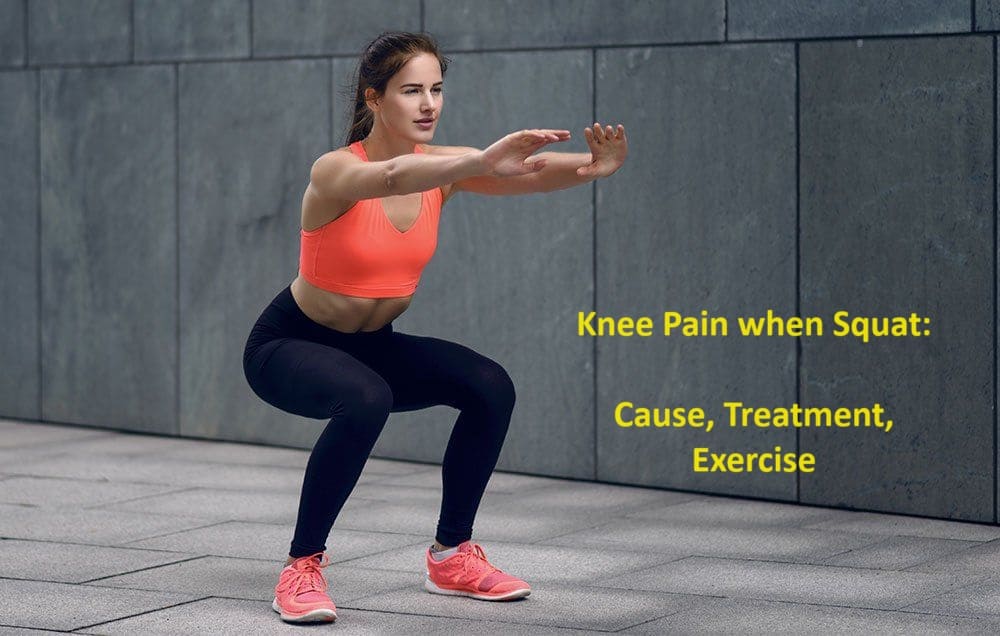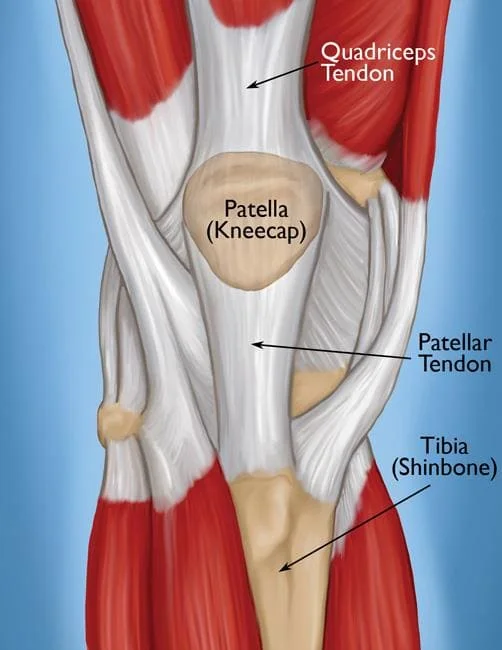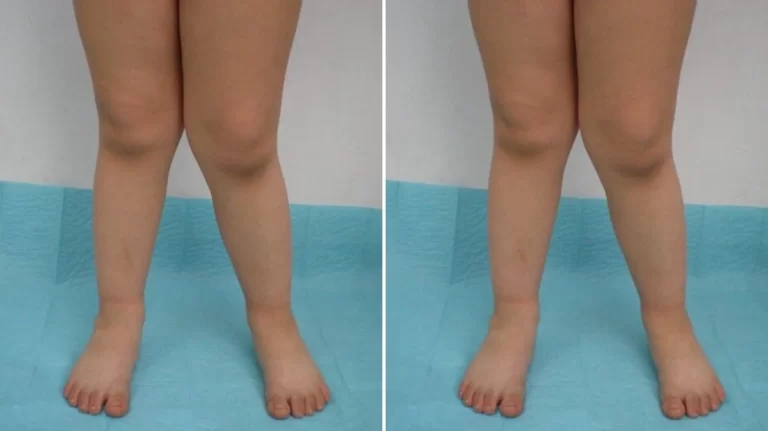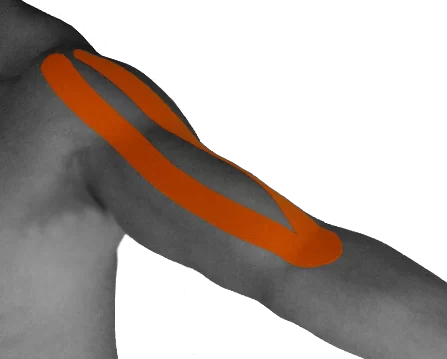Knee Pain when Squat: Cause, Treatment, Exercise
Why do I have Knee Pain when squatting?
Squats are a fundamental exercise in strength training, often regarded as a cornerstone of lower body development. They target various muscle groups, including the quadriceps, hamstrings, and glutes, making them a popular choice for athletes, fitness enthusiasts, and individuals looking to build strength and improve overall fitness.
However, for some people, squats can be a source of frustration and discomfort due to knee pain. If you’ve experienced knee pain while squatting, you’re not alone.
There could be problems with your cartilage, knee cap, hip flexors, and more if you suffer chronic knee pain during squatting. Additionally, poor posture and stance might make knee pain worse.
Our body can squat without experiencing any pain or discomfort. Muscle power, flexibility, and alignment all come into play as we bend our knees. These factors and problems might put pressure on the knee joint, causing pain and inflammation.
The key to any physical movement is being aware of your body’s limitations. Squatting can increase the likelihood of progressive pain even if it may not be the main cause of knee discomfort in some musculoskeletal problems.
In this article, we’ll explore the common causes of knee pain during squats, offer tips on how to prevent it, and provide guidance on when it’s essential to seek professional help for a pain-free squatting experience.
What are the Causes of Knee Pain When Squatting?
Knee pain during squats can have various underlying causes, and understanding these factors is crucial for addressing and preventing discomfort. Here are some common causes of knee pain when squatting:
Squatting Incorrectly
When performing squats, poor posture or stance might make knee pain worse. When the hips, knees, or ankles are misaligned during a deep squat, the knee joint may experience substantial strain. The patella and femur repeatedly rub against one other as a result of this pressure. Effective technique includes:
- Knees should be hip-width apart.
- making sure your weight is distributed evenly.
- Pay attention to your knees and upper torso.
When working out with weights, it’s extremely crucial to keep a proper posture.
Weak Muscles
Muscle Weakness mainly in the quadriceps, Hamstring, and glutes, can contribute to knee pain during squats. If these muscles are not sufficiently developed, they may be unable to provide the required stability and support, putting additional stress on the knee joint.
Patellofemoral Syndrome
Runner’s knee, also known as patellofemoral syndrome, involves problems with the kneecap’s position and movement. The cartilage on the rear of the kneecap deteriorates as a result of knee pain while squatting. Clicking, redness, and pain are typical indications of a runner’s knee. Inflammation and knee pain after squats are exacerbated by the amount of pressure exerted on the joint and a deficiency in synovial fluid.
Patellar Tendonitis
Patellar tendonitis, another name for jumper’s knee, is a condition in which the tendon just below the kneecap is damaged. Jumping, kicking, and other athletic activities put constant force across the tendon, which causes inflammation and tears across the tendon. As a result, the tendon experiences additional pressure and becomes quite painful when you squat.
Tight Muscles and Tendons:
The quadriceps or iliotibial (IT) band, which are tight around the knee, might pull on the knee joint and hurt when performing squats.
Osteoarthritis
One of the most prevalent types of arthritis is osteoarthritis. It develops as the bone-end cushioning cartilage degrades. Bone spurs, discomfort, stiffness, and inflammation are among this condition’s typical symptoms. The cartilage is squeezed during a squat, which increases friction between the bones. The main reason why most elderly people find it challenging to squat is knee pain.
Cartilage Tear
One of the most frequent injuries that cause knee pain while performing squats is a meniscus tear. Damage to the cartilage that makes up the knee joint lining is the cause of knee pain after squats. The cartilage serves as a shock absorber during knee flexion. However, cartilage degeneration places the knee under additional pressure, causing excruciating discomfort and inflammation. A meniscus tear is characterized by a locking sensation and piercing pain.
Iliotibial Band Syndrome (ITBS)
Pain on the outside of the knee is an indication of ITBS. The thick band that runs from the outside of the thigh to the outside of the kneecap gets tighter when you squat. This pulls on the kneecap, causing misalignment, and increasing friction and pain. Iliotibial Band Syndrome is characterized by pain, a snapping sensation, and inflammation in addition to the pain.
Previous Injuries:
Your knees may be more prone to pain during squats if you’ve had past knee conditions such as ligament tears or meniscus damage.
Imbalance in Strength
Incorrect patella (knee cap) tracking can be caused by muscle imbalances between the quadriceps and hamstrings or the inner and outer thigh muscles, which can be painful.
Inadequate Warm-up
Your muscles and joints will be less ready for the demands of squats if you skip a good warm-up, which will increase your risk of knee pain.
It’s essential to identify the specific cause of your knee pain during squats to address it effectively. Correct form, using the right warm-ups, and resolving muscular imbalances are frequently important first steps in preventing and treating knee pain during squats.
Treatment
The treatment for knee pain during squats depends on the underlying cause and severity of the pain. Here are some common treatment approaches that can help alleviate knee pain:
Rest and Recovery:
The first thing to do if you encounter severe knee pain when performing squats is to rest and let your knees heal. Give your body some time for healing by avoiding any activities that make the pain worse.
Use of RICE Protocol
The RICE method, a widely utilized approach, consists of four elements: rest, ice, compression, and elevation.
Rest: Stay away from any motion that can aggravate knee pain.
Ice: Applying an ice pack to the injured joint for 15 minutes will help to lessen pain and swelling.
Compression: Use a compression bandage around the joint to help in edema reduction.
Elevation: Place your leg on some pillows so that your knee is raised above your heart.
Anti-Inflammatory Medications
Anti-inflammatory drugs and non-steroidal painkillers can help lessen extreme knee pain and swelling. Exercise and legally prescribed medications can both improve your ability to cope. You might have to rely on drugs until your body is fit for physical activity, depending on the reason for your knee pain and its degree.
Physical Therapy
Assessments are done in physiotherapy to identify the deficits and causes of knee pain. After a thorough analysis, a treatment strategy tailored to your needs is created. With the help of exercises and hands-on therapy from Mobile Physiotherapy Clinic, you will gradually restore strength and stability. Chiropractic treatment, acupuncture, electrotherapy, and other services are available in addition to standard physical therapy.
Strengthening Exercises
Targeted exercises to strengthen the quadriceps, hamstrings, and glutes can help stabilize the knee joint. Additionally, these exercises help to enhance posture, flexibility, and balance. Knee bends, thigh contractions, leg raises, and hamstring stretches are common exercises. Learn the strengthening exercises you can perform depending on how badly your knees hurt.
Stretching and Mobility Work
Stretching exercises can ease tension in the knee-area muscles and tendons and increase flexibility. The quadriceps, hamstrings, and IT band should all be stretched.
Alternative Exercises
Sometimes it may be necessary to switch to lower-body workouts that don’t aggravate knee pain. It might be more comfortable to perform exercises like leg presses, leg extensions, or box squats.
Learn Proper Squat Form
It’s critical to understand and practice good squat form. This involves maintaining the spine neutral, keeping the knees in line with the toes, and only moving as far as is comfortable.
Knee Support and Footwear
Knee wraps or braces might provide additional support for some people. Proper footwear, such as shoes with sufficient arch support, can aid in maintaining knee alignment when performing squats.
Always pay attention to your body and avoid forcing through pain when performing squats. Exercise through pain might cause more harm because pain is a clue that something might be wrong. To guarantee a correct diagnosis and efficient treatment strategy, always seek expert advice if you experience persistent or severe knee pain when performing squats.
Exercise
Here are some alternative exercises that are generally gentler on the knees and can help you work on lower-body strength and flexibility:
Partial Squats
Limit your range of motion by performing partial squats rather than deep squats. This targets the quads and glutes while putting less strain on the knees. For more stability, use a Smith machine or squat rack.
Leg Press
Without significantly affecting your knees, leg press machines let you work your quadriceps, hamstrings, and glutes. Maintain good form and refrain from bending your knees too far at the bottom of the exercise.
Lunges
Lunges are useful for improving knee alignment while strengthening the lower body. Focus on keeping a steady core and appropriate knee tracking as you move forward, backward, or to the sides.
Step-Ups
Exercises like step-ups performed on a bench or platform may be more gentle on the knees than squats. They help to maintain proper knee alignment while working the quads, hamstrings, and glutes.
Wall Sits
Without moving the knee joint, wall sits are an isometric workout that promotes quadriceps endurance. Just squat against a wall and maintain the position for a predetermined period of time.
Box Squats
In a box squat, you sit back down on a box or bench before standing back up. By improving control and alignment, this variant lowers the possibility of knee pain.
Bodyweight Glute Bridges
Bridge exercises that primarily work the glutes are a great approach to developing the posterior chain without putting too much strain on the knees. Bend your knees while lying on your back, then raise your hips.
Calf Raises
Better knee support can be achieved by having strong calf muscles. To exercise the calf muscles, stand on the edge of a step or platform and lift and drop your heels.
Conclusion
In summary, knee pain during squats is a common issue with multiple potential causes. Address it by prioritizing proper form, strengthening supportive muscles, and considering alternative exercises. Always listen to your body, seek professional advice if needed, and stay committed to your fitness goals with a focus on safety and well-being.
Remember that strengthening your knees for squats is a gradual process, and patience is key. Don’t rush into heavy lifting if you’re not prepared, as this can lead to injury. Focus on incremental progress and prioritize proper form to ensure long-term knee health and success in your squatting endeavors.
FAQs
How can I fix my knee pain when squatting?
To fix knee pain when squatting:
Check and correct your squat form.
Strengthen your leg muscles.
Address muscle imbalances.
Stretch and warm up properly.
Consider knee-friendly exercises.
Consult a professional if the pain persists.
Is it good to squat with knee pain?
Deep squats may need to be avoided or reduced for people who have knee degeneration or injuries, such as osteoarthritis, in order to protect the knee. However, evidence indicates that even those with arthritis may benefit from static (long hold), low-angle squats within pain-free range.
Do squats damage knee cartilage?
The meniscus cartilage, which serves as the elastic shock absorber cartilage between the two bones, is also subjected to a great deal of pressure when you perform a deep squat. These sensitive and crucial structures in the knee may become worn over time (years for some, one squat for others).
How can I strengthen my knee cartilage?
Strengthening knee cartilage directly is not possible, as cartilage is a connective tissue that lacks its blood supply and doesn’t readily regenerate. However, you can take steps to support and maintain healthy knee cartilage:
Exercise Regularly
Strengthen Knee Muscles
Maintain a Healthy Weight
Proper Nutrition
Stay Hydrated
Avoid High-Impact Activities
How do I strengthen my knees for squats?
Strengthening your knees for squats involves improving the overall stability and strength of the muscles and ligaments around the knee joint. Here are some key steps to help you strengthen your knees for squats:
Proper Squat Form
Perform Warm-Up Before Exercise
Do Bodyweight Squats regularly
Leg Strengthening Exercises such as Leg presses, Lunges, Step-ups
Do Regular Balance and Stability Training
References
- Brahmbhatt, A. (2022, November 24). What Causes Knee Pain When Squatting. https://www.physiotattva.com/blog/what-causes-knee-pain-when-squatting
- Crna, R. N. M. (2023, March 17). How to identify and treat inner knee pain. https://www.medicalnewstoday.com/articles/321065








One Comment